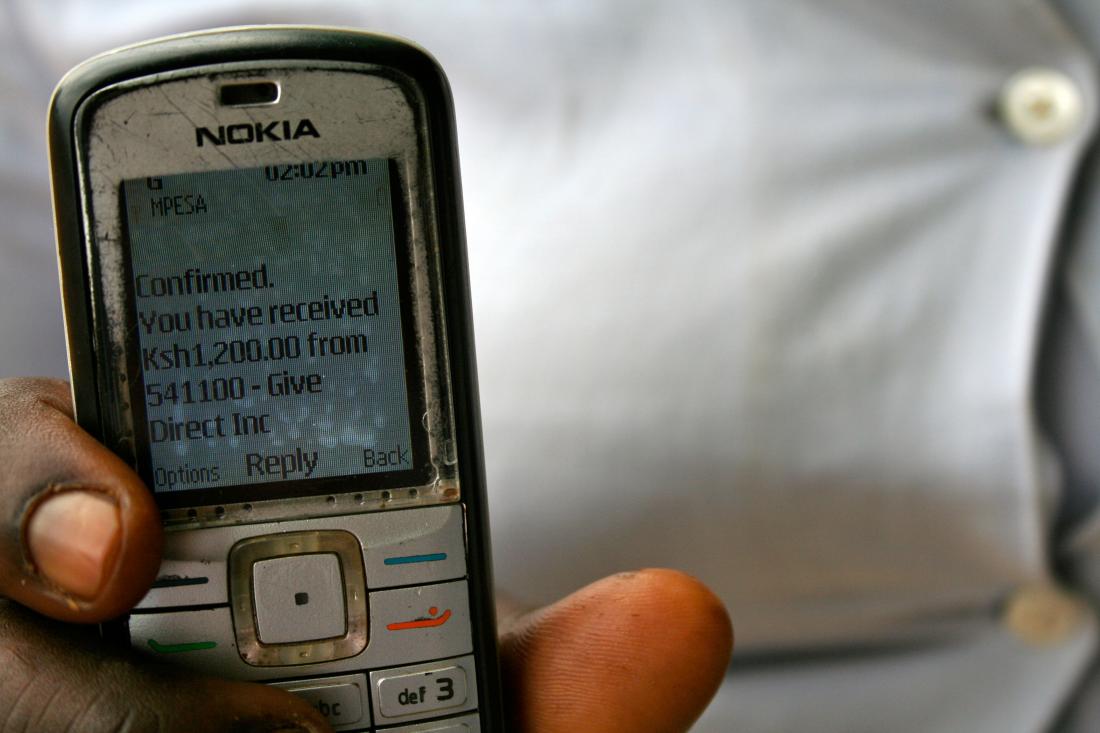Improving Economic and Psychological Well-being through Unconditional Cash Transfer in Kenya
- Rural population
- Women and girls
- Empowerment
- Women’s/girls’ decision-making
- Self-esteem/self-efficacy
- Gender attitudes and norms
- Cash transfers
- Digital and mobile
- Unconditional cash transfers
Unconditional cash transfers (UCTs) allow poor households the choice and flexibility of allocating resources to meet the needs they find most pressing. In Rarieda, Kenya, researchers conducted a randomized evaluation to measure the impact of GiveDirectly’s UCT program on poor rural households’ economic and psychological well-being. Results demonstrated that the program had significant welfare-improving impacts, both economically and psychologically, for transfer recipients.
الموضوع الأساسي
Low-income households are often unable to make important welfare-improving investments, such as going to the doctor or investing in better farming technologies, because they lack the money to do so. One potential policy response is to provide money that enables households to make these productive investments. Existing research shows that conditional cash transfers (CCTs), which provide households with cash and incentivize certain investments or behaviors, can have important benefits for households’ welfare. However, there is less evidence about the impact of unconditional cash transfers (UCTs), which provide money unconditionally and are less costly to administer than CCTs because they don’t require the monitoring and follow-up. However, without any conditions, people may be less inclined to spend the money responsibly or on productive investments. To address these questions, researchers conducted a randomized evaluation in Rarieda, Kenya to measure the impact of GiveDirectly’s UCT program on poor rural households’ economic and psychological well-being.
سياق التقييم
GiveDirectly, Inc. is an international NGO that makes unconditional cash transfers (UCT) to poor households in developing countries. Since 2011, the organization has operated in Kenya by providing UCTs to households in the country’s poorest regions through M-Pesa, a mobile phone-based money transfer service that is widely used throughout the country. This study took place in Rarieda, a predominantly rural and poor district in western Kenya.

معلومات تفصيلية عن التدخل
Researchers conducted a randomized evaluation to measure the impact of GiveDirectly’s unconditional cash transfer program on poor rural households. Among the 120 villages with the highest proportion of thatched roofs in the district, 60 were randomly selected to receive the UCT, and 60 served as a comparison group. Within the 60 UCT villages, researchers identified 503 poor households living in a house with a thatched roof to receive a cash transfer. To measure whether transfers affected nearby households, researchers collected data on an additional “spillover” 505 households who did not receive a transfer but lived in the same village as households that did. In the 60 villages that did not receive any UCT program, 432 households served as a pure comparison group. Within the villages receiving the UCTs, researchers examined three design features:
- Gender: The UCT was randomly assigned to either the female or male head-of-household.
- Timing: The UCT was randomly assigned to be delivered either as a lump-sum amount of US$404, or as a series of nine monthly installments of US$45.
- Size: 137 households were randomly assigned to receive an additional transfer of US$1,121 paid in seven monthly installments of US$160 each. In total, “large” transfer households received US$1,525, while “small” transfer households received US$404.
Researchers surveyed all households before the program began and approximately 4 months after the program ended.
النتائج والدروس المستفادة بشأن السياسات
Overall, GiveDirectly increased households’ assets, consumption, and food security. The program also improved psychological well-being, especially among households with female recipients and households that received the large transfer. GiveDirectly had no impact on health or education measures.
Economic impacts: GiveDirectly households significantly increased consumption by US$35.66 per month (23 percent), across a range of goods including food, medical and educational expenses, and social events. There was no increase in expenditures on temptation goods, such as alcohol and tobacco. Overall, the UCT had similar impacts regardless of transfer recipient and timing.
GiveDirectly households increased investments by US$301.51 (61 percent), in assets such as livestock, furniture, and metal roofs. GiveDirectly households were 24 percentage points more likely to have a non-thatched roof after the program, compared to 16 percent of households in the comparison group. Monthly-transfer recipients were less likely than lump-sum recipients to invest in these types of assets, suggesting that they were less able to save the UCT. Investments in income-generating activities (e.g., non-agricultural businesses and livestock) increased and revenues from these activities increased by US$16.15 per month (33 percent). However, estimated profits did not.
There were no effects on economic outcomes in spillover households compared to pure comparison villages, suggesting that the UCT had no major impact on the overall economic environment in GiveDirectly villages.
Psychological impacts: GiveDirectly households reported a 0.26 standard deviation increase on an index measuring psychological well-being. This improvement was largely driven by increases in happiness and life satisfaction, and reductions in stress, worries, and depression. There were no differences in self-reported measures between monthly-transfer and lump-sum recipients, but cortisol levels were significantly higher for monthly-transfer recipients. A potential explanation being that the monthly-transfer recipients seemed to have difficulty saving or investing the transfer, which may have led to increased stress.
Psychological well-being was 0.14 standard deviations higher for GiveDirectly households with female recipients compared to GiveDirectly households with male recipients, driven largely by significantly lower cortisol levels; there were no other differences in outcomes among these households. One reason for this improvement in psychological well-being may be that female empowerment improved among these households (measured along indicators such as reduced domestic violence and increased female decision-making power), though results did not capture a significant increase on these measures.
In addition, based on this research, GiveDirectly has mobilized resources to scale up the program in Kenya in Uganda, enrolling over 125,000 households in cash transfer programs since 2013. For more details, see the evidence to policy case study.
